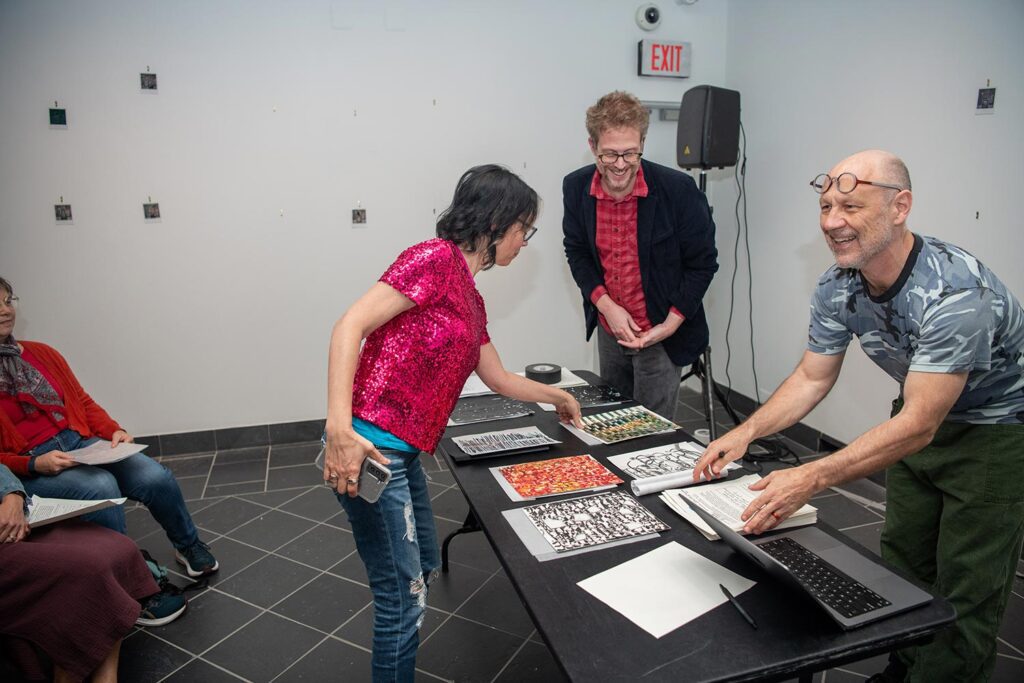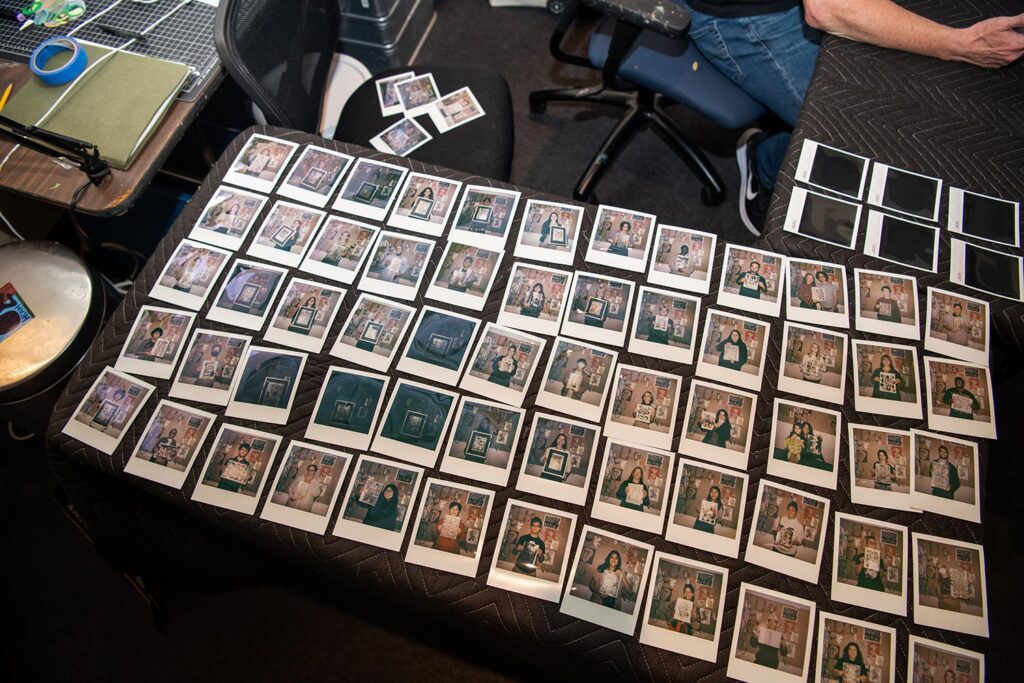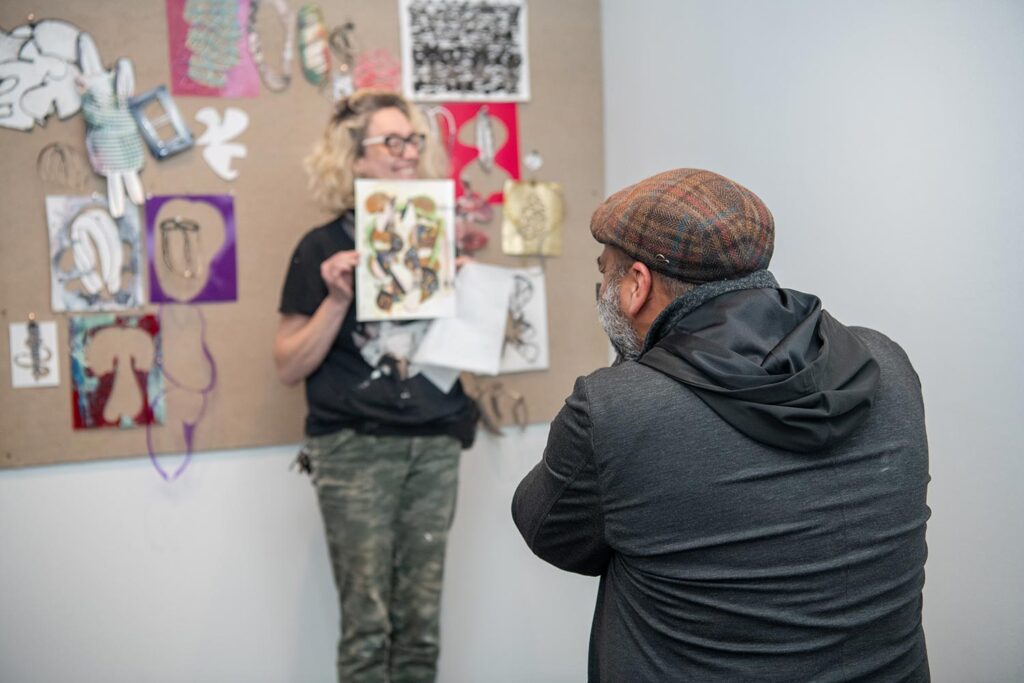On Oct. 11, as John Muse’s exhibition Extra Medium ended its run in the Cantor Fitzgerald Gallery, an eager crowd gathered in Whitehead Campus Center. The final day of the exhibition was no mere closing reception. From the outset, Muse, assistant professor and director of visual studies and director of Haverford’s Visual, Culture, Arts, and Media facility, had announced his intention to give away a work of art to everyone who attended. Drawn by the promise of free art and a unique experience, more than 130 members of Haverford’s community crowded into the gallery with the hopes of taking home a work.
“Most people who enjoy art don’t necessarily feel that they have a right to art, or it’s either low on the list of essentials or something that can be enjoyed and appreciated from a distance,” Muse says of the impetus for the giveaway. “I wanted to see what would happen if I eliminated that distance by doing something like this.”
The event, titled Everything Must Go! 100% Off! was no standard first-come, first-served affair, however. Anyone interested in taking home one of his intricate collages was provided a numbered lottery form and an agreement to fulfill for the artist. Before they could select a work, which included the 35 framed works featured in the exhibition and many more unframed works drawn from the artist’s storage, they were required to promise to care for the print, correspond with Muse, and see through a task or promise of their own design.
Muse used an online random number generator to determine the selection order, and the lucky first 35 were invited to select one of the framed works hanging on the gallery walls. He reserved the honor of first choice for Extra Medium’s curator, Homay King, professor and chair of history of art at Bryn Mawr College. Upon having their number called, each person in the gallery came forward, announced their promise, and then set about making the difficult choice of which artwork they wanted to claim. As works disappeared from the gallery walls, they were replaced by Polaroid images of their new caretakers. Muse says he gave away 110 artworks in total.
The participants’ promises ranged from humorous to touching: learning their father’s favorite song on guitar, shouting the name of the exhibition after completing a 5-kilometer row at the Head of the Charles Regatta in Boston, or simply making someone smile each day. Muse says the promise he appreciated most was made by Hudson DiRe ’25, who now faces the daunting task of visiting the thousands of trees on Haverford’s arboretum campus and giving each a name.
“That’s something that is as wondrous to think about as it might be to do,” Muse says of DiRe’s intentions. “Even if he never does it, I now have an image in my mind of what it might be like if I were to try.”
Everything Must Go was not Extra Medium’s sole interactive element, as Muse and King split the gallery space with a temporary wall, behind which Muse set up a make-shift but functioning studio to create more work and grant visitors insight into his creative process. He also hosted screenings of his experimental films and an interactive game in Haverford’s VCAM that invited participants to “talk about shapes, and talk generally about liking, loving, and hating things.”
It’s clear that Muse’s work and exhibition seek to free themselves of the traditions of the art world. By inviting people in the gallery into his creative space, Muse breaks down the barriers that typically stand between the artist and admirer. One Haverford student who took home a piece of John Muse’s art touched on this, saying, “Normally art is presented as something elitist, so it’s nice for him to make his art accessible.” Another stated, “It was beautiful. It felt like we were really a part of this larger idea… that this would all expand outwards.”
This story includes additional reporting by Dominic Mercier.





